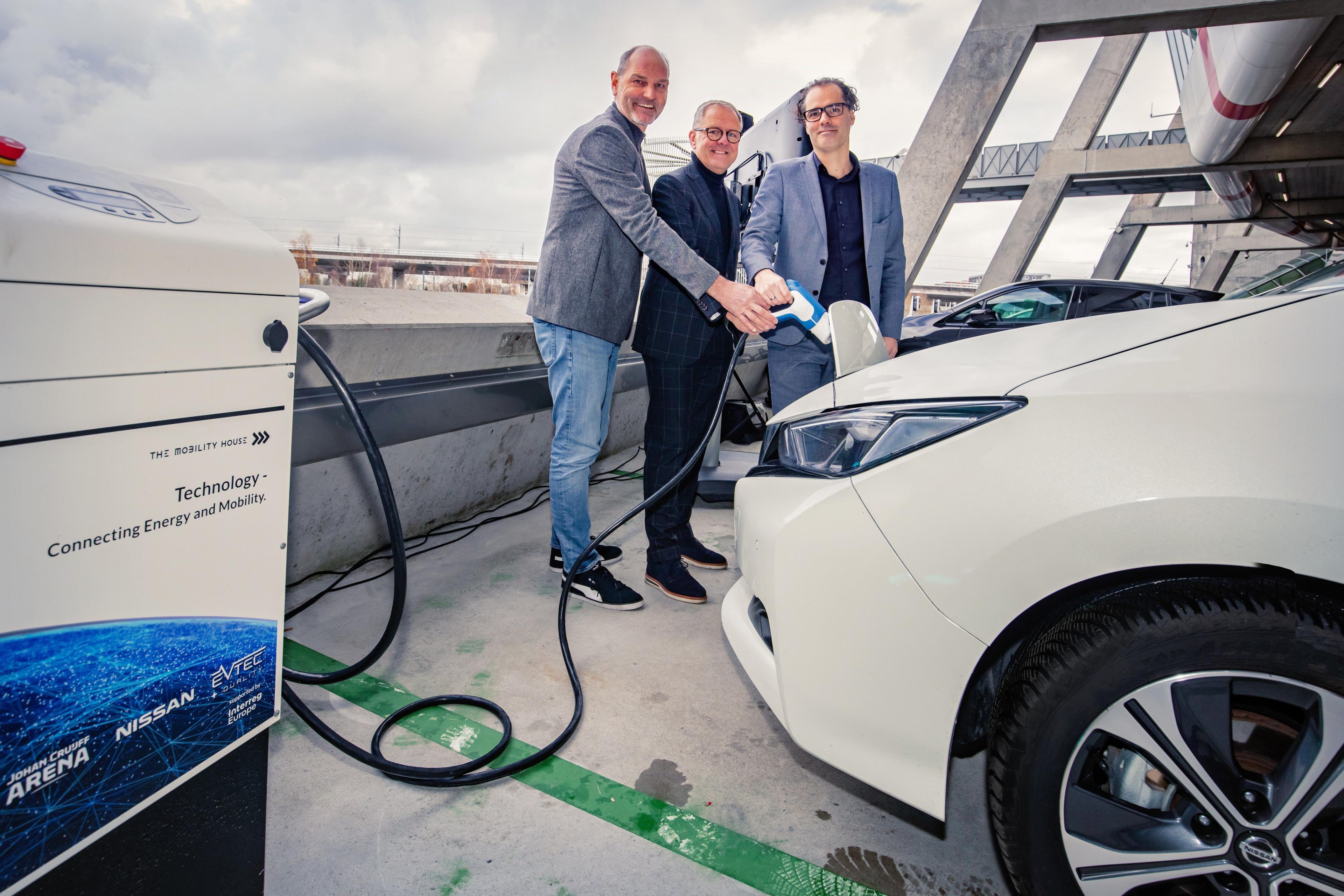This is the next level in innovation to realize the vision of sustainable power generation in the Netherlands and to advance the energy revolution. JCA is taking a pioneering role in Europe and is once again building on The Mobility House’s many years of expertise as a technological partner in the areas of smart charging, vehicle-to-grid (V2G) and battery storage. Today, the first bidirectional charging station was put into operation in the JCA by Laurens Ivens, a councillor of the municipality of Amsterdam, during a ceremonial opening event.
The project combines a total of 15 new charging stations with the existing 3-megawatt battery storage, consisting of 148 Nissan Leaf batteries, and the 1-megawatt photovoltaic system on the roof of the arena - using innovative charging and energy management. The intelligent software control developed by The Mobility House enables electric cars of stadium visitors – given the owners’ consent – not only to receive power from the charging station, but also to feed electricity back into the stadium’s electrical infrastructure. "Vehicle-to grid" is an important milestone on the way to a more sustainable energy supply. In the future, JCA's nearly 2000 parking spaces will be successively equipped with intelligent charging infrastructure. The stadium will thus be expanded into an energy hub - using electric car batteries to help store electricity from renewable energies and thus relieve the power grid.
The energy from the cars reduces the amount of electricity drawn from the grid when the stadium's electricity load is extremely high, for example during a Champions League game. As a consequence, electricity bill costs are reduced. In addition, this energy supplements the battery storage, which is available as an emergency power supply for the JCA in the event of a power failure (blackout). The Amsterdam fans thus have the unique opportunity to support their club also in the form of providing electrical energy. In this way, they also stabilise the electricity grid and promote the use of renewable energies. The system also ensures that the car battery is recharged in time when visitors return home.
The use of electric vehicles as an innovative energy source is a system promoted by the European Union and is also in line with Amsterdam's goal of becoming the V2X capital of Europe. The project is the result of collaboration between the Royal BAM Group, The Mobility House and Johan Cruijff ArenA and is supported by SEEV4City, an initiative of Interreg North Sea Region and the Amsterdam Climate & Energy Fund.
For The Mobility House, this project represents a further milestone in the intelligent integration of vehicle batteries into the energy system and complements the existing V2G, smart charging and battery storage projects that have been implemented in recent years with partners such as Daimler, Renault, Nissan, Audi and others.
Photo from left to right: Thomas Raffeiner, CEO The Mobility House, Henk van Raan, CIO Johan Cruijff ArenA, and Laurens Ivens, Alderman Amsterdam City Council
